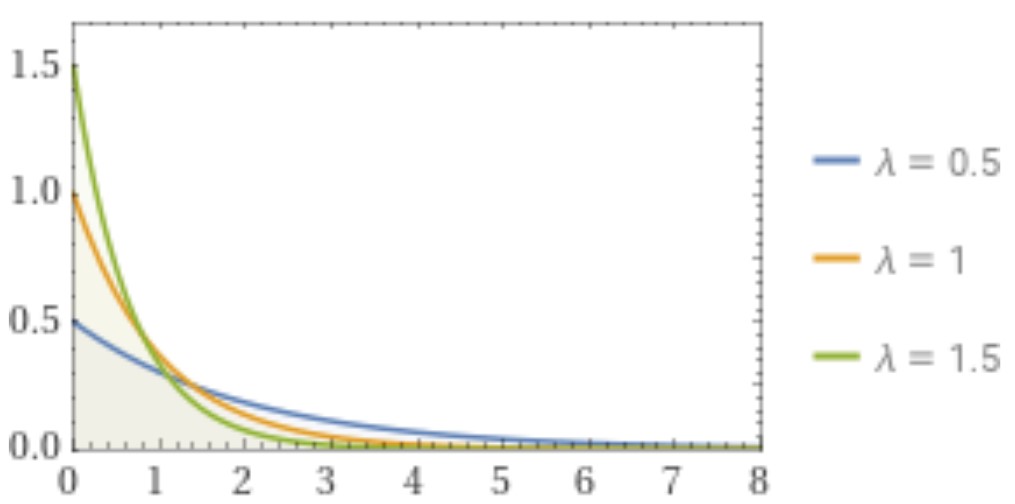Exponential Distributions
Learning Objectives
Understand the shape, statistical properties and probability formulas for exponential distributions.
Properties of Exponential Distributions
An exponential distribution is:
- A highly used ‘continuous’ distribution
- Often used to model the time elapsed between events (we call this [latex]x[/latex]).
- It is ‘memoryless’ (see more in the ‘MEMORYLESS’ section below)
- We call the average lambda ([latex]\lambda[/latex]). It measures the average number of events per time unit.
- It is right skewed (mean > median), and [latex]\lambda[/latex] and [latex]x[/latex] can never be negative.

Calculating Probabilities
We can calculate the probabilities using formulas or Excel. The formulas are:
- [latex]P(\text{at most or less than}) = P(X \le x) = 1 - e^{-\lambda x}[/latex]
- [latex]P(\text{at least or more than}) = P(X \ge x) = e^{-\lambda x}[/latex]
The Excel calculations are:
- [latex]P(\text{at most or less than}) =\text{EXPON.DIST}(x, \lambda, \text{TRUE})[/latex]
- [latex]P(\text{at least or more than}) =1-\text{EXPON.DIST}(x, \lambda, \text{TRUE})[/latex]
Memoryless Property
- Memoryless means that it does not matter how much time has elapsed previously.
- When calculating the odds of a certain amount of time elapsing going forward,
- It’s although the clock resets to zero.
- See Wikipedia‘s explanation of memoryless:
It describes situations where the time you’ve already waited for an event doesn’t affect how much longer you’ll have to wait
Statistical Properties
The following metrics apply to exponential distributions:
- [latex]x = \text{time between events}[/latex]
- [latex]\lambda = \text{lambda}=\text{number of events per time unit}[/latex]
- The mean is: [latex]\mu = \frac{1}{\lambda}[/latex]
- The standard deviation is also: [latex]\frac{1}{\lambda}[/latex]
- The variance is: [latex]\sigma^2 = \frac{1}{\lambda ^2}[/latex]
- The distribution is right skewed and the skewness = 2.
Video Explaining Exponential Distributions
Key Takeaways (EXERCISE)
Key Takeaways: Exponential Distributions
Your Own Notes (EXERCISE)
- Are there any notes you want to take from this section? Is there anything you’d like to copy and paste below?
- These notes are for you only (they will not be stored anywhere)
- Make sure to download them at the end to use as a reference

